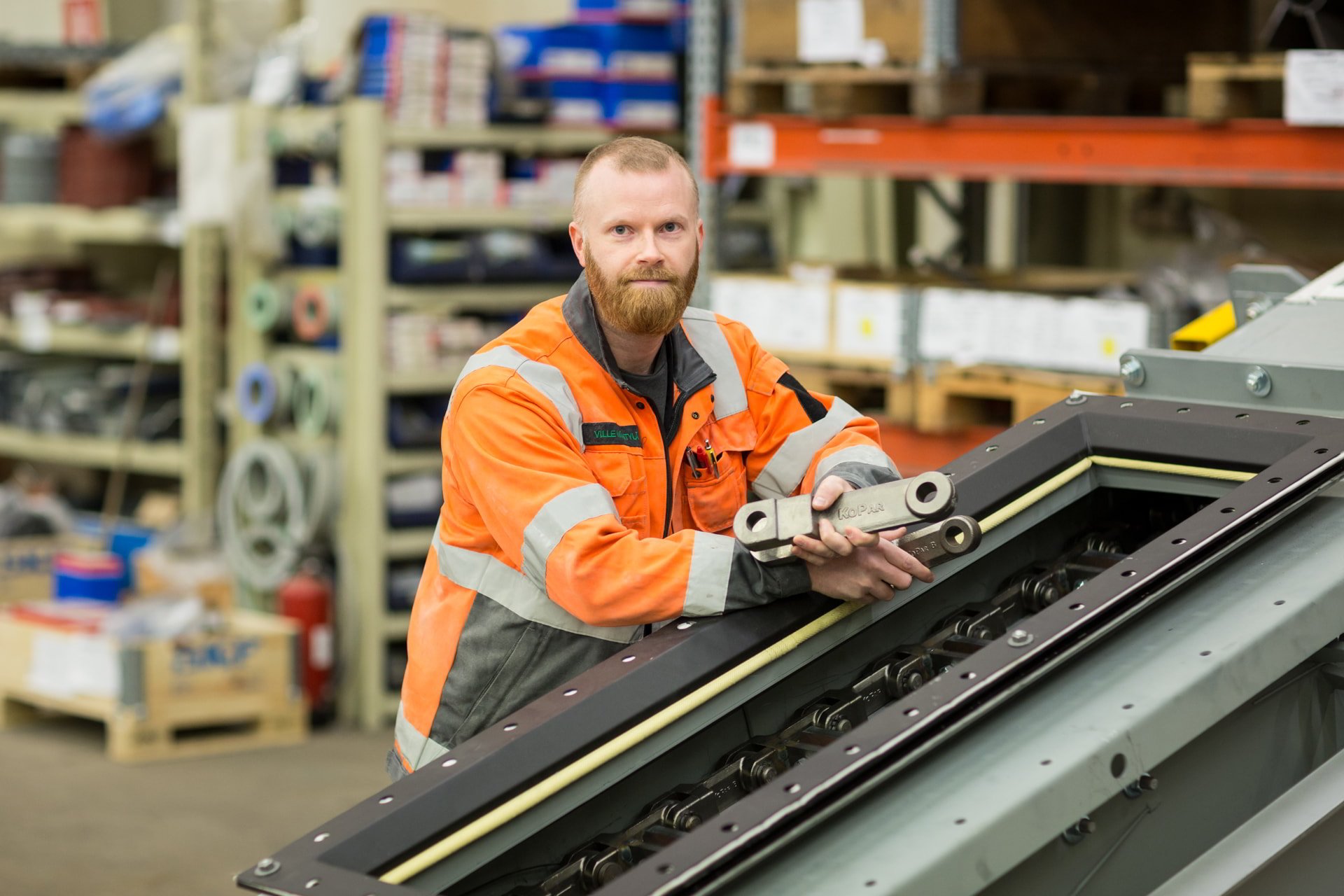Maintenance of a chain conveyor is a crucial part of the efficiency and durability of industrial material handling processes. But when does a chain conveyor need maintenance? Is it only signs of wear, such as noises and slowing down, or should maintenance be planned proactively? In this article, we will take a closer look at the signs of chain conveyor maintenance needs, maintenance intervals, and proactive maintenance practices. Additionally, we will discuss safety considerations and the benefits of regular maintenance.
What are the signs of chain conveyor maintenance needs?
The need for chain conveyor maintenance can manifest in various ways, and it is important to recognize these signs in time. One of the most common signs is unusual noise, such as clanking or squeaking, which may indicate problems with the chain or other mechanical parts. This could be a sign of wear or loosening parts.
Another sign of maintenance need is the slowing down or uneven operation of the chain conveyor. This can be due to changes in chain tension, motor issues, or excessive load. Slowing down can directly affect the efficiency of the production process and lead to downtime.
Malfunctions, such as chain jumping or stopping, are clear indications that maintenance is needed. Such problems can result from chain wear, twisting, or other mechanical defects that require closer inspection and possibly part replacement.
How often should a chain conveyor be maintained?
The maintenance interval of a chain conveyor depends on several factors, such as the frequency and conditions of use. In general, chain conveyors that are used continuously and in harsh conditions require more frequent maintenance than systems used in lighter conditions.
Operating conditions, such as dustiness, humidity, and temperature, also affect maintenance intervals. For example, extremely dusty environments can accelerate wear and require more frequent cleaning and inspection. Similarly, high temperatures can affect the durability of the chain and other parts.
Proactive maintenance is a key part of effective maintenance, and it can help determine optimal maintenance intervals. Proactive maintenance is based on regular inspections and the detection of potential issues before they cause downtime or require costly repairs.
What does proactive maintenance include?
Proactive maintenance is a strategic approach that focuses on preventing problems and optimising equipment performance. It includes regular inspections to detect signs of wear and address them in time.
Proactive maintenance may also include measurements and analyses, such as vibration and temperature measurements, to help identify hidden defects. This data can be used to plan maintenance actions and avoid unexpected downtimes.
Additionally, proactive maintenance may involve programming and the use of automation, which allows for continuous monitoring of equipment condition. This technology can provide real-time information and help optimise maintenance intervals and actions.
What are the benefits of regular maintenance?
Regular maintenance brings numerous benefits that directly impact the performance and lifespan of a chain conveyor. Firstly, it helps maintain the optimal operating capability of the equipment, which in turn improves production efficiency and quality.
Maintenance also reduces the risk of unexpected downtimes, which can cause significant costs and disruptions in production. Proactive maintenance actions can prevent major repair needs, saving time and resources in the long run.
Finally, regular maintenance promotes improvements in environmental and workplace safety. A well-maintained chain conveyor operates more efficiently and consumes less energy, reducing environmental impacts and enhancing workplace safety.
Summary
Chain conveyor maintenance is a critical part of industrial material handling processes. It is important to recognize the signs of maintenance needs, determine suitable maintenance intervals, and implement proactive maintenance. Safety is always a priority, and regular maintenance brings numerous benefits, such as better performance and reduced downtimes. A planned maintenance schedule can help ensure that the chain conveyor operates efficiently and sustainably, while also promoting more environmentally friendly practices.

You have a challenge that needs solving?
Let us help! Contact us for more information about our products and services.
